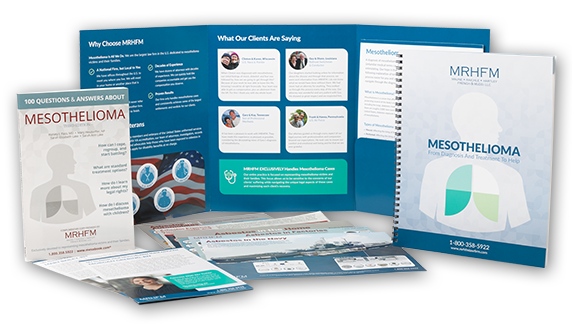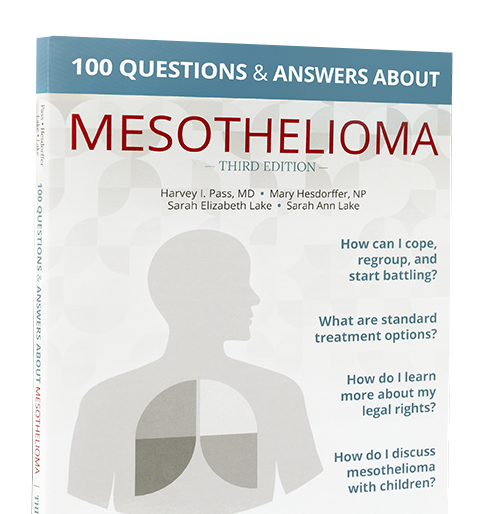Is asbestosis the same as mesothelioma? The short answer is no. Though there are some similarities, the two conditions differ in latency periods, certain symptoms, diagnostic testing, and treatment options. For example, asbestosis occurs after exposure to high levels of asbestos for extended periods. Mesothelioma can develop after exposure to low levels of the mineral. Let’s take a look at both conditions and compare.
Asbestosis is widespread scarring of lung tissue caused by extended periods of breathing in asbestos dust. The condition develops primarily in workers exposed to asbestos in high levels in shipyards and in occupations such as construction, pipefitting, and insulation. Workers in these areas are typically exposed to the mineral for 10 to 20 years before symptoms develop. However, patients usually first seek medical attention at least 15 years after exposure with symptoms such as:
- Labored breathing (progressive dyspnea)
- Chest tightness or pain
- Loss of appetite with weight loss
- Crackling, clicking or rattling noises made by one or both lungs during inhalation (inspiratory crackles)
- Decreased ability to exercise
- Skin discoloration from inadequate oxygenation of the blood or poor circulation (cyanosis)
- Misshapen fingers or toes (clubbing)
To make an accurate diagnosis, doctors may utilize imaging tests such as chest X-rays and computerized tomography (CT). Doctors may also use pulmonary function tests to help determine how well the lungs are functioning. These tests measure the airflow in and out of the lungs, and how much air the lungs can hold.
There is no cure for asbestosis, so treatment focuses on relieving symptoms and slowing the progression of the disease. Oxygen therapy relieves shortness of breath, while draining fluid from around the lungs may make breathing easier. Occasionally, lung transplantation has been successful in treating asbestosis.
Mesothelioma is cancer of the pleura, called pleural mesothelioma, or cancer of the membranes of the abdomen, called peritoneal mesothelioma. Pleura are the serous membrane investing the lungs and lining the walls of the chest cavity. High-risk groups for mesothelioma include shipyard, insulation, and pipefitting workers, as well as auto mechanics, chemical workers, machinery operators, firefighters, and power plant workers. As mentioned, mesothelioma can develop after low levels of exposure. However, it typically takes 30 to 40 years for symptoms to appear and two to three months between the onset of symptoms and diagnosis.
Symptoms of pleural mesothelioma include:
- Shortness of breath
- Chest pain under the rib cage
- Painful coughing
- Unusual lumps of tissue under the skin on the chest
- Unexplained weight loss
Symptoms of peritoneal mesothelioma include:
- Abdominal pain and swelling
- Unexplained weight loss
- Lumps of tissue in the abdomen
Doctors use a range of tests and methods to diagnose mesothelioma. They evaluate medical histories and physical exams, and they use imaging tests such as X-rays and CT scans, echocardiograms, positron emission tomography (PET) scans, magnetic resonance imaging (MRI) scans, blood tests, tests of fluid and tissue samples, biopsies, ultrasound, and pulmonary function tests.
There is no cure for mesothelioma. However, common cancer treatments could improve quality of life or even extend life. If the disease is detected early enough, these same treatment options could remove all of the cancer and any tumors from the body.
Common mesothelioma treatment options include chemotherapy, radiation therapy, surgery, and targeted therapy. A new type of treatment called “biologic therapy” is also being used in clinical trials. This emerging therapy shows promise as a treatment for late-stage mesothelioma.
If you have symptoms of asbestosis or mesothelioma, contact your doctor immediately. Because these symptoms are common to other diseases as well, only a doctor can determine if you have asbestosis, mesothelioma, or other condition.
Sources
"How Is Malignant Mesothelioma Diagnosed?" American Cancer Society. American Cancer Society, Inc., 2017. Web. 28 Mar. 2017.
"Malignant Mesothelioma Treatment." National Cancer Institute (NCI). U.S. Department of Health and Human Services, National Institutes of Health (NIH), n.d. Web. 28 Mar. 2017.
Mayo Clinic Staff. "Asbestosis." Mayo Clinic - Diseases and Conditions. Mayo Foundation for Medical Education and Research (MFMER), 1998-2017. Web. 28 Mar. 2017.
Mayo Clinic Staff. "Mesothelioma." Mayo Clinic - Diseases and Conditions. Mayo Foundation for Medical Education and Research (MFMER), 1998-2017. Web. 28 Mar. 2017.
Papadakis, Maxine A., Stephen J. McPhee, and Michael W. Rabow, eds. "Occupational Pulmonary Diseases." Current Medical Diagnosis & Treatment. 54th ed. New York: McGraw-Hill Education, 2015. 305-06. Print.
Papadakis, Maxine A., Stephen J. McPhee, and Michael W. Rabow, eds. "Pulmonary Metastatis." Current Medical Diagnosis & Treatment. 54th ed. New York: McGraw-Hill Education, 2015. 1589-1590. Print.
Porter, Robert S., Justin L. Kaplan, Barbara P. Homeier, and Richard K. Albert. "Asbestosis." The Merck Manual Home Health Handbook. Third ed. Whitehouse Station, NJ: Merck Research Laboratories, 2009. 498-99. Print.





